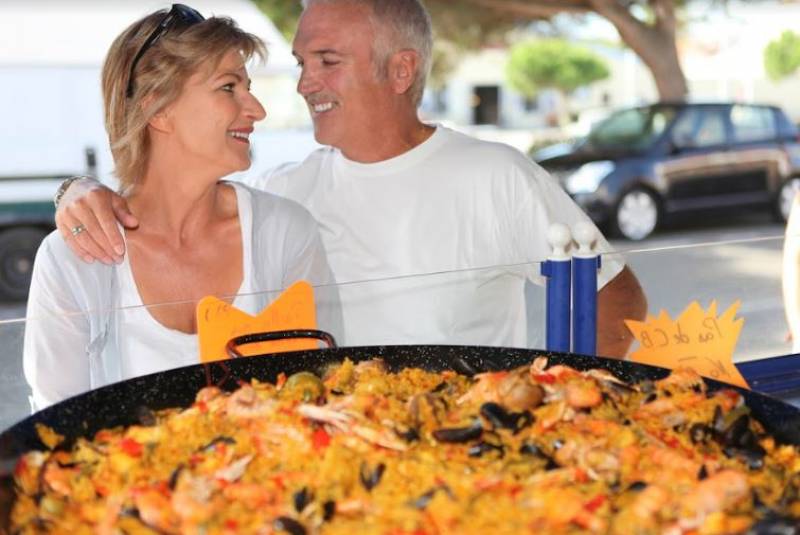The top 10 tourist mistakes in Spain
Use our top hacks to blend in with the locals in Spain

Tourists these days are far more the intrepid traveller than the map and guidebook carrying visitors of the past, but there are still a few common mistakes holidaymakers make that cause them to stand out from the locals.
To help travellers blend in seamlessly with their Spanish counterparts, we’ve listed the top ten faux pas for tourists to avoid.
1. Eating too early
Spain is a gastronomic gem for travellers, but most tourists are surprised to learn just how late the Spanish eat their meals. The iconic Menú del Día, a three or four course bargain feast which is usually available in the afternoon, attests to this.
Spaniards usually eat their main meal somewhere between 2 and 4pm, followed by the traditional siesta time. Dinner is a more modest affair, consisting of smaller portions, and often not consumed until 9 or 10pm.
For this reason, Spanish restaurants will be packed late at night while many in smaller towns still shut up shop for a few hours in the middle of the day.
2. Falling foul to pickpockets
Relatively speaking, the crime rate in Spain isn’t any higher than the rest of Europe, but an influx of tourists combined with heaving streets during the summer makes it a pickpocket’s dream.
The bigger cities are the main target, particularly on public transport, but thronged beaches and bustling local markets also attract unscrupulous pickpockets. Keep bags and purses close to your body and don’t store phones or wallets in your back pocket to avoid thefts.
3. Going shirtless on the street
While visitors from cooler climes tend to strip off at the first sign of sun, men walking the streets without their shirt on and women wearing bikinis is not only frowned upon, but can result in heavy fines in places like Barcelona and Mallorca.
4. Not speaking the lingo
Fluency in English is definitely improving in Spain, particularly in the bigger cities and coastal resorts, and among the younger generations. However, in more rural settings and mainly Spanish towns and villages the locals might struggle, and it’s well worth learning a few handy phrases before you arrive.
5. Hitting the shops on a Sunday
Sundays are still considered a traditional day of rest in Spain, and aside from a few exceptions at the height of summer and during festivals, most supermarkets, shops and banks remain closed.
This can be a nuisance if your flight arrives in late on a Saturday night, but most of the staples are available on Sundays in the majority of filling stations around the country.
6. Eating in touristy spots
For an authentic Spanish meal, it’s better to head off of the beaten track as most restaurants in tourist areas are aimed specifically at travellers, many with more expensive prices and sub-standard food. They can often be spotted by the staff waiting outside to coax you in, or menus with garish pictures in several languages.
For the real experience, choose Spanish restaurants away from the main drag, which will almost certainly be cheaper and more delicious.
7. Not opting for a Menú del Día
Given that we now know Spaniards tend to eat their biggest meals in the middle of the day, it’s no surprise that the Menú del Día is a firm favourite in Spain.
This budget-friendly option usually consists of three courses with bread and a drink and will only set you back around 15 euros.
8. Drinking sangria
While enjoying your Menú del Día you may be tempted to order a refreshing glass of Sangria, but this will mark you out as a tourist instantly. The Spanish usually opt instead for a tinto de verano or summer wine, a cooling mix of red wine and lemonade or sparkling water.
9. Leaving a big tip
The tipping culture in Spain has long been the source of considerable debate but it certainly differs from the likes of the US. Generally speaking, the Spanish aren’t huge tippers unless the restaurant is exceptional, and it’s more usual to leave a few coins behind, or round up to the nearest euro on your bill.
10. Having a siesta
While many Spanish businesses close between 2 and 5pm to facilitate lunch breaks, the traditional idea of taking a nap in the middle of the day doesn’t really hold true anymore.
The siesta was originally designed to give field workers a break at the hottest point of the day, but nowadays most families save the afternoon snooze for a Sunday.
Image: Archive
Loading
Sign up for the Spanish News Today Editors Roundup Weekly Bulletin and get an email with all the week’s news straight to your inbox
Special offer: Subscribe now for 25% off (36.95 euros for 48 Bulletins)
OR
you can sign up to our FREE weekly roundup!
Read some of our recent bulletins:
Discount Special Offer subscription:
36.95€ for 48 Editor’s Weekly News Roundup bulletins!
Please CLICK THE BUTTON to subscribe.
(List price 3 months 12 Bulletins)
Read more stories from around Spain:
Contact Spanish News Today: Editorial 966 260 896 /
Office 968 018 268




























